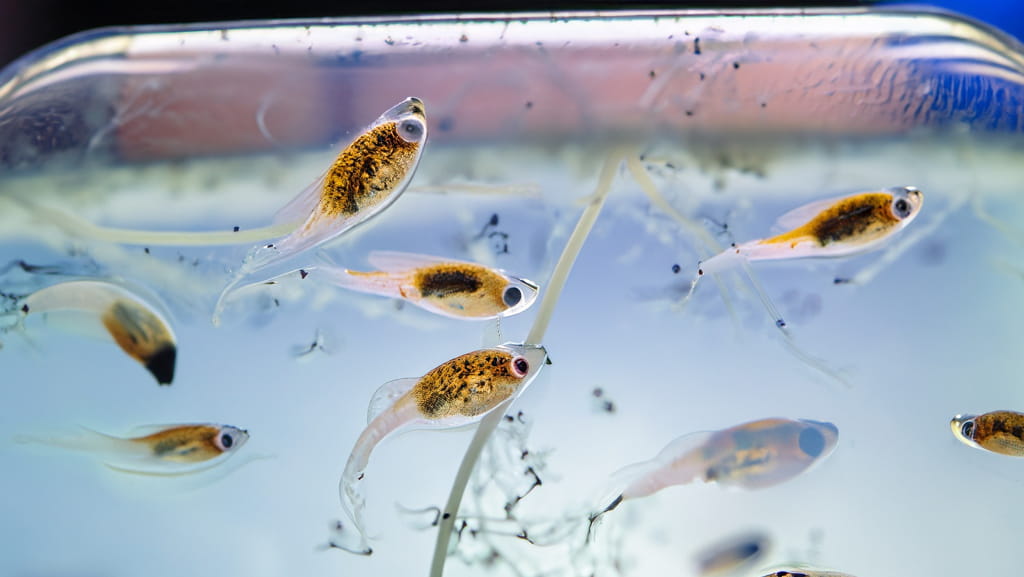Altered neural connections are observed in germ-free larvae as a result of reduced pruning by immune cells.
 A study published in the open-access journal PLOS Biology by Joseph Bruckner and colleagues from the University of Oregon in the US reveals that normal social development in zebrafish is influenced by microorganisms through the modulation of neural connection pruning in the developing brain.
A study published in the open-access journal PLOS Biology by Joseph Bruckner and colleagues from the University of Oregon in the US reveals that normal social development in zebrafish is influenced by microorganisms through the modulation of neural connection pruning in the developing brain.
Transparent skin in zebrafish larvae provides researchers with a unique window into neural development. In a series of experiments, the neuronal and social development of zebrafish larvae was investigated when reared with or without their normal microbiota for the initial seven days of development.
It was observed that the early absence of microbes inhibited larval social behavior at day 14, even though their normal microbiota had been restored a week earlier. In comparison to siblings with a normal microbiota, fewer immune cells called microglia were found in the forebrains of these germ-free larvae, and neural branching patterns were denser and more complex. Single-cell RNA sequencing indicated lower levels of complement c1q, a gene involved in the pruning of neural connections known as synapses, in their microglia.
Microglia reduction at the genetic level, without impacting the microbiota, yielded similar outcomes, resulting in increased neural density and branching compared to controls. The restoration of normal neural and social development in germ-free larvae was achieved by introducing various bacterial groups native to the zebrafish intestine. This suggests that microglial pruning activity is sensitive to a feature common across many types of bacteria.
In this study, it is demonstrated for the first time that microglia play a crucial role in the pruning of neural connections in zebrafish larvae, and that the presence of an intact microbiota is indispensable for the typical pruning process and social behavior in fish. Additionally, the results highlight a critical developmental window within the initial week of larval growth when the microbiota stimulates the localization of microglia to the forebrain, where they engage in the pruning of neural connections, according to the authors.
Eisen further notes,
“Social interactions are of paramount importance for both animals and humans. Through our examination of zebrafish social interactions, we have uncovered that symbiotic bacteria foster social behavior by enhancing the capacity of microglia, the brain’s immune cells, to modify previously identified ‘social’ neurons in the zebrafish brain.”
Abstract
Host-associated microbiotas guide the trajectory of developmental programs, and altered microbiota composition is linked to neurodevelopmental conditions such as autism spectrum disorder. Recent work suggests that microbiotas modulate behavioral phenotypes associated with these disorders. We discovered that the zebrafish microbiota is required for normal social behavior and reveal a molecular pathway linking the microbiota, microglial remodeling of neural circuits, and social behavior in this experimentally tractable model vertebrate. Examining neuronal correlates of behavior, we found that the microbiota restrains neurite complexity and targeting of forebrain neurons required for normal social behavior and is necessary for localization of forebrain microglia, brain-resident phagocytes that remodel neuronal arbors. The microbiota also influences microglial molecular functions, including promoting expression of the complement signaling pathway and the synaptic remodeling factor c1q. Several distinct bacterial taxa are individually sufficient for normal microglial and neuronal phenotypes, suggesting that host neuroimmune development is sensitive to a feature common among many bacteria. Our results demonstrate that the microbiota influences zebrafish social behavior by stimulating microglial remodeling of forebrain circuits during early neurodevelopment and suggest pathways for new interventions in multiple neurodevelopmental disorders.
https://journals.plos.org/plosbiology/article?id=10.1371/journal.pbio.3001838